Christopher Conlon: Poet First
By, Rich Ristow
To most genre readers, Christopher Conlon is a novelist who was recently nominated for a Bram Stoker Award for Superior Achievement in a First Novel. Others may know him as editor of two very high profile  short story anthologies, He Is Legend and Poe's Lighthouse. Conlon, however, doesn't readily identify himself first as a novelist or an anthologist. He's a poet first and foremost, having written Gilbert and Garbo in Love, The Weeping Time, and Mary Falls: Requiem for Mrs. Surratt. Recently, Creative Guy Publishing released Conlon's latest, Starkweather Dreams. The book probes the lives of Charlie Starkweather, a serial killer back in the 1950's, and Caril Anne Fugate, his girlfriend. DSM recently had the chance to pose a few questions regarding poetry and writing about tragic figures.
short story anthologies, He Is Legend and Poe's Lighthouse. Conlon, however, doesn't readily identify himself first as a novelist or an anthologist. He's a poet first and foremost, having written Gilbert and Garbo in Love, The Weeping Time, and Mary Falls: Requiem for Mrs. Surratt. Recently, Creative Guy Publishing released Conlon's latest, Starkweather Dreams. The book probes the lives of Charlie Starkweather, a serial killer back in the 1950's, and Caril Anne Fugate, his girlfriend. DSM recently had the chance to pose a few questions regarding poetry and writing about tragic figures.
Dark Scribe Magazine: A lot of contemporary American poetry seems mired in a navel-gazing "church of self." You seem to sidestep that completely by focusing on figures and stories from history. How did you come to this approach and how do you make it work for you?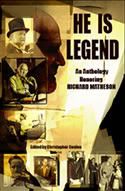 Christopher Conlon: Well, there was no plan. It happened very organically. Most of my early poems did indeed occupy that "church of self," and a few of them were pretty good. But at some point I seemed to lose interest in myself as a subject. Around 2000 or 2001 I wrote a poem called "What There Is," which focused on an older brother of mine who died as an infant, and from there I began asking myself what my parents might have been like then, how they might have reacted to what happened. Both had been dead many years and I knew almost nothing about their early lives. I took what little I did know and played with it in my imagination for a while, and out came the pieces that became the "What There Is" chapbook. The poems were an attempt, I think, to somehow reach my mother and father, if only imaginatively. That was the breakthrough for me—I taught myself how to combine fact with imagination with verse techniques and come up with a kind of work that is, I think, uniquely mine. From there it was a matter of simply following my passions—for example, my first full-length book of poems, Gilbert and Garbo in Love, resulted from my lifelong love affair with silent films. In all the books I always stick scrupulously to the "known facts"—I never put characters somewhere they couldn't have been, doing something they couldn't have done. But I also allow myself completely free reign in inventing the characters' psychologies, their motivations, their private obsessions and fears.
Christopher Conlon: Well, there was no plan. It happened very organically. Most of my early poems did indeed occupy that "church of self," and a few of them were pretty good. But at some point I seemed to lose interest in myself as a subject. Around 2000 or 2001 I wrote a poem called "What There Is," which focused on an older brother of mine who died as an infant, and from there I began asking myself what my parents might have been like then, how they might have reacted to what happened. Both had been dead many years and I knew almost nothing about their early lives. I took what little I did know and played with it in my imagination for a while, and out came the pieces that became the "What There Is" chapbook. The poems were an attempt, I think, to somehow reach my mother and father, if only imaginatively. That was the breakthrough for me—I taught myself how to combine fact with imagination with verse techniques and come up with a kind of work that is, I think, uniquely mine. From there it was a matter of simply following my passions—for example, my first full-length book of poems, Gilbert and Garbo in Love, resulted from my lifelong love affair with silent films. In all the books I always stick scrupulously to the "known facts"—I never put characters somewhere they couldn't have been, doing something they couldn't have done. But I also allow myself completely free reign in inventing the characters' psychologies, their motivations, their private obsessions and fears.
Dark Scribe: Do you ever foresee a time when you might write more personal poetry?
Christopher Conlon: No. But then again I've been a writer long enough to know that it's foolhardy to predict. "The lyf so short, the craft so long to lerne," as Chaucer says. I'm still learning.
Dark Scribe: So, how rigorous is your research process, especially when delving into your subject matter?
Christopher Conlon: I don't do anything I would call "research," which sounds very boring and soul-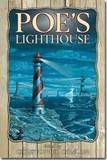 deadening to me. What I do is read about things that interest me. Eventually, if I become interested enough, poems start to come. But to be more specific, I do try to familiarize myself with all the basic sources. For Mary Falls, which focuses on Mary Surratt, one of the forgotten figures in the Lincoln assassination, I also visited her home in Clinton, Maryland, which is now a museum, as well as Ford's Theatre in Washington. I took the John Wilkes Booth Escape Route tour. All of that helped me get a sense of the atmosphere of the thing, for want of a better phrase. I didn't need to travel for Starkweather Dreams—Charlie and Caril's lives and crimes are very well-documented, and anyway, I've been in that part of Nebraska before—but I did have to make a trip to the Library of Congress to find a copy of the basic source, an obscure, long out-of-print book by James Melvin Reinhardt called The Murderous Trail of Charles Starkweather. Reinhardt actually interviewed Starkweather at length in prison, and the book has a great deal of material that's never been published elsewhere. But only a small run of it was ever done, and on the rare occasions you can locate a copy on eBay or something you find that it goes for three or four hundred dollars. Well, you can't check books out from the Library of Congress, of course, so instead I took their copy over to one of the Xerox machines they have there—I'd come prepared with several rolls of quarters—and simply Xeroxed the entire book! I'm sure that's some awful violation of copyright, but, well, you do what you have to do for your art. It proved to be an invaluable resource.
deadening to me. What I do is read about things that interest me. Eventually, if I become interested enough, poems start to come. But to be more specific, I do try to familiarize myself with all the basic sources. For Mary Falls, which focuses on Mary Surratt, one of the forgotten figures in the Lincoln assassination, I also visited her home in Clinton, Maryland, which is now a museum, as well as Ford's Theatre in Washington. I took the John Wilkes Booth Escape Route tour. All of that helped me get a sense of the atmosphere of the thing, for want of a better phrase. I didn't need to travel for Starkweather Dreams—Charlie and Caril's lives and crimes are very well-documented, and anyway, I've been in that part of Nebraska before—but I did have to make a trip to the Library of Congress to find a copy of the basic source, an obscure, long out-of-print book by James Melvin Reinhardt called The Murderous Trail of Charles Starkweather. Reinhardt actually interviewed Starkweather at length in prison, and the book has a great deal of material that's never been published elsewhere. But only a small run of it was ever done, and on the rare occasions you can locate a copy on eBay or something you find that it goes for three or four hundred dollars. Well, you can't check books out from the Library of Congress, of course, so instead I took their copy over to one of the Xerox machines they have there—I'd come prepared with several rolls of quarters—and simply Xeroxed the entire book! I'm sure that's some awful violation of copyright, but, well, you do what you have to do for your art. It proved to be an invaluable resource.
Dark Scribe: Do you outline the structural approach to your content, or do you write poems as they come to you, filling in any gaps once you have a substantial manuscript to work with?
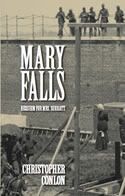 Christopher Conlon: The latter. I never outline anything. The poet William Stafford used to say he believed that any poem you're writing should be able to go any place at any time; I feel that way not only about individual poems, but about these sequences I write as well. The poems come in any order—from wherever it is they come from—and I write them down. Later I revise them and shuffle them around to find their best narrative sequence, and, yes, at times I do find that I have a gap here or there that needs to be filled. So I go back to reading, thinking, dreaming. Eventually something presents itself that can get me past the trouble spot.
Christopher Conlon: The latter. I never outline anything. The poet William Stafford used to say he believed that any poem you're writing should be able to go any place at any time; I feel that way not only about individual poems, but about these sequences I write as well. The poems come in any order—from wherever it is they come from—and I write them down. Later I revise them and shuffle them around to find their best narrative sequence, and, yes, at times I do find that I have a gap here or there that needs to be filled. So I go back to reading, thinking, dreaming. Eventually something presents itself that can get me past the trouble spot.
Dark Scribe: Some people choose to show or use fragmentation by tabbing/scattering lineation across the page. In Starkweather Dreams, you did something similar, but broke up the language with multi-space gaps. Why, and what does it add to the book?
Christopher Conlon: What it adds to the book, or doesn't, is up to the reader, I suppose. But I used the gaps, the seemingly random white space, as a way of trying to reflect the increasing fragmentation of Charlie Starkweather's mind. You'll notice that, other than the first poem, "Charlie Dream," which acts as a kind of overture to the entire book, the language for Charlie starts out completely conventionally. Only gradually as you go through the book do the odd white spaces start to appear. Then there are more and more of them.
“Love: Charlie”
Before Caril he dreamed of killing for no reason,
but then with her eyes, her voice, her soft fingers,he’d found a reason, something worth killing for,
and it was a tribute to her, an honor bestowed:he would remake the world for her,
burn the fucker down, build it up again in Their image
Sometimes, too, the language of the Charlie poems is all jammed together, no punctuation at all, or there are strange italicizations (which often indicate direct quotes, as they do in “Love: Charlie”). Anything to keep his thought processes from seeming to flow particularly smoothly or naturally—instead they should feel jumbled, broken-up, rushed, confused. The poems which focus on Caril feature no such fragmentation.
Dark Scribe: So, by that implication, Caril's mind is the more stable of the two? Though she has very specific problems of her own.
Christopher Conlon: Caril was just a lonely, troubled, rather immature fourteen-year-old who would 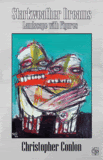 never have hurt anyone on her own. But Charlie would have, and did—his first killing, of gas station attendant Robert Colvert, was perpetrated without her, a month before their collaborative rampage commenced. Caril was psychologically in his thrall—not too hard to understand when you realize that he murdered her mother, stepfather, and toddler sister, leaving her with nothing but him. He was five years older than Caril—a huge difference at that age. We see this kind of thing all the time in society, most recently a year or two ago with the Elizabeth Smart case—the girl who was abducted and held hostage for, I believe, a couple of years, even though she went out in public with her abductors and had any number of chances to escape. But she didn't. She was psychologically dominated by them, just as Caril was by Charlie. That's very clear to me.
never have hurt anyone on her own. But Charlie would have, and did—his first killing, of gas station attendant Robert Colvert, was perpetrated without her, a month before their collaborative rampage commenced. Caril was psychologically in his thrall—not too hard to understand when you realize that he murdered her mother, stepfather, and toddler sister, leaving her with nothing but him. He was five years older than Caril—a huge difference at that age. We see this kind of thing all the time in society, most recently a year or two ago with the Elizabeth Smart case—the girl who was abducted and held hostage for, I believe, a couple of years, even though she went out in public with her abductors and had any number of chances to escape. But she didn't. She was psychologically dominated by them, just as Caril was by Charlie. That's very clear to me.
Dark Scribe: What drew you to these two?
Christopher Conlon: It was mostly Caril. In my teaching career I've known a lot of fourteen-year-old girls, and what I've mostly learned from knowing them is how very, very young a fourteen-year-old girl really is. For someone like Caril—from a background of poverty, alienated from her family, a very poor student—someone like Starkweather must have seemed exciting, even sort of glamorous, at least until he turned homicidal. There was a poignancy to Caril that touched my imagination.
“Caril with an i”
After her father left she would drape
her mother’s fanciest dress
over her shoulders, spread on
rouge, mascara, lipstick, a flouncy
flower-filled hat, and stand out
in the dirt road facing their house, saying
My name is Caril with an i and my daddy
will be back soon, while winter drained
the Nebraska sky, and darkness rushed in.
Dark Scribe: Caril Ann and Charlie are definitely not Mickey and Malory from Natural Born Killers—that is, romanticized "tragic lovers." Do you think this story, or the legacy of Starkweather has become perverted or changed over the years?
Christopher Conlon: Sure, but that's what happens with outlaw couples—think of Bonnie and Clyde, a pair of violent thugs who have become folk heroes of a sort. There's a tendency to romanticize. I very much did not want to do that in Starkweather Dreams. The story of Charlie Starkweather and Caril Ann Fugate is horrifying. It's sad. It's pathetic.
Dark Scribe: How does your writing process differ when writing fiction? How would you compare and contrast say, Starkweather Dreams and Midnight on Mourn Street?
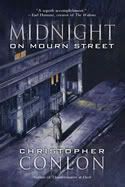 Christopher Conlon: There isn't much difference except that writing a novel is a more linear process. I really don't find writing a poem much different from writing a paragraph, though of course one is using different techniques in each. Still, it's a never-ending struggle with language either way, isn't it? To try to find the exact word, not the approximately acceptable one. To discover the most resonant image. The proper rhythm to the line or the sentence. Those challenges don't change whether it's a poem or a novel or an article or a play or a letter to the editor. It's all language. Every line, every sentence will always be a struggle—which isn't to imply unhappiness, by the way. I love the struggle.
Christopher Conlon: There isn't much difference except that writing a novel is a more linear process. I really don't find writing a poem much different from writing a paragraph, though of course one is using different techniques in each. Still, it's a never-ending struggle with language either way, isn't it? To try to find the exact word, not the approximately acceptable one. To discover the most resonant image. The proper rhythm to the line or the sentence. Those challenges don't change whether it's a poem or a novel or an article or a play or a letter to the editor. It's all language. Every line, every sentence will always be a struggle—which isn't to imply unhappiness, by the way. I love the struggle.
Dark Scribe: You were nominated for a Stoker for your novel Midnight on Mourn Street. Starkweather Dreams was just released. What's next for you?
Christopher Conlon: Well, I have a novella and interview in the newest issue of Dark Discoveries Magazine (#13), which is just out. Next up should be two anthology appearances. I have fiction in a book William F. Nolan is editing for Dark Discoveries Press called The Bleeding Edge, due sometime this summer; and, as you know, I have a poem in the upcoming Death in Common poetry anthology from Daverana. My theatrical adaptation on Midnight on Mourn Street received a professional staged reading in May; I'm on the hunt now for a company to give the script an actual production. But my main energies for the next few months will be on my next novel, tentatively titled Lullaby for the Rain Girl, which has some supernatural elements and will actually include at least a couple of my poems in the text, too. Wish me luck. I may need it.
For more information about Christopher Conlon, visit his official author website.




Reader Comments